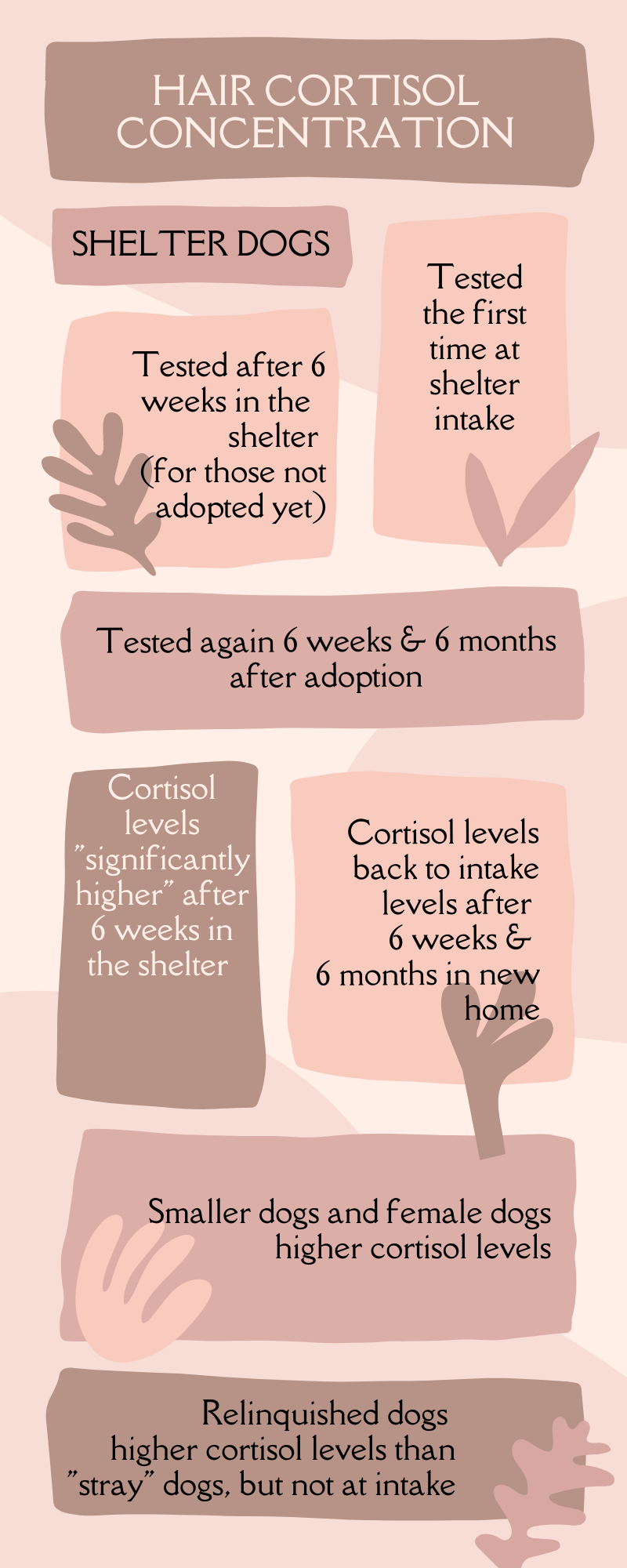A study published in Scientific Reports in April 22 measured hair cortisol concentrations in shelter dogs before & after adoption, essentially to see if this new testing method works to evaluate long-term shelter dog stress. The data comes with a bunch of caveats, but it's still interesting and informative adopters and those working or volunteering in the animal rescue and animal shelter environment. When does shelter dog stress go up and down? What does it mean for you?
More...
Shelter Dog Stress Paper Caveats
Today's research builds upon yesterday's and so on. Sometimes, it even contradicts other papers and studies. Often, the sample size is small and results require validation by later studies and researchers.
Much of that's true with this new data set out of the Netherlands. Yet, the headlines about measures of shelter dog stress feel important.
When Dogs' Stress Levels Climb and Fall
Where as cortisol measured in dogs' saliva or urine offers a small snapshot in time, cortisol measured from hair samples offer a longer-term view of dogs' stress levels.
Researchers tested the hair cortisol concentration levels 4 times:
- At intake when dogs arrived at the shelter
- After 6 weeks in the shelter (for those not adopted yet)
- After 6 weeks in new homes
- After 6 months in new homes
Shelter Dog Stress Headlines
Here are the main points as the infographic below shows:
Shelter dog stress levels tested "significantly higher," as measured by hair cortisol concentration, after 6 weeks in the shelter.
BUT, those shelter dog stress levels typically returned to the baseline intake levels after 6 weeks in their new homes and stayed about there 6 months later.
In addition, the paper reports higher hair cortisol concentrations in:
- Smaller dogs
- Female dogs
- Relinquished dogs (compared to "stray" dogs)
What Does That Mean for You?
It means supporting Fear Free Shelters and strategies that keep dogs' stress levels low in homes, in shelters, everywhere.
It means working to get dogs adopted quickly. Not so fast that we don't make a good match or don't understand their personalities and needs, but you know, promptly with as little lingering and languishing as possible
It means understanding that it likely takes TIME for dogs to get back to baseline -- body chemistry wise. Be patient with them and plan for at least 6 weeks of cortisol recovery time.






0 comments